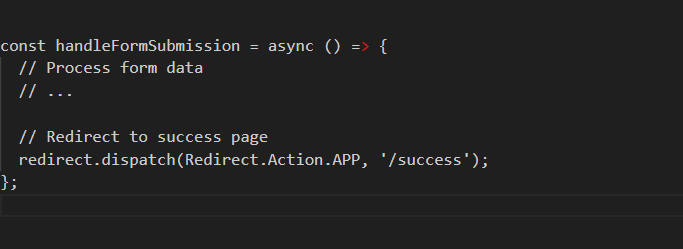What Are the Various Techniques for Using Page Redirection in a Shopify App?
Introduction
In Shopify app development, Shopify app redirection is an essential technique for guiding users through different sections of your app or between the Shopify Admin, your app, and external URLs. Proper implementation of page redirection techniques ensures a seamless and intuitive user experience, especially when interacting with Shopify Admin or storefront pages. In this guide, we’ll walk you through various Shopify page redirect methods and how they can enhance Shopify app navigation within your app.
What is Redirection in Shopify Apps?
Page redirection in a Shopify app involves sending the user from one page to another within the app, or to an external URL, in response to user actions or app processes. This feature helps improve the flow and usability of your app by guiding users to the most relevant content. There are several types of redirections:
- Internal Redirection (within the Shopify Admin or your app).
- External Redirection (sending users to an external site or service).
- App-to-App Redirection (redirecting within your app for better navigation).
Why is Redirection Important?
Page redirection plays a vital role in enhancing the user experience of a Shopify app. Properly implemented redirections ensure users are never lost, and they can easily find the next steps in their journey. Key benefits of Shopify app redirection include:
- Improved User Experience: Redirection prevents confusion and enhances navigation.
- Seamless Workflow: After acting (e.g., form submission), users are directed to the next logical page.
- Error Prevention: Helps avoid broken links and pages that users can’t access.
Without effective redirection, users may get lost, leading to frustration and a poor experience.
What Are the Preconditions for Page Redirection in Shopify Apps?
Before diving into Shopify URL redirects, make sure you have the following prerequisites in place:
- Shopify App Bridge: This is required to facilitate Shopify app redirection and manage UI interactions.
- Polaris Components: A set of UI components provided by Shopify, including functionality for integrating App Bridge and handling redirections.
- Redirect API: The redirect.dispatch method is central to implementing Shopify page redirects.
How to Implement Page Redirection in Shopify Apps
1. Setting Up App Bridge
To get started with Shopify app redirection, you must first set up Shopify App Bridge in your app. This library helps manage communication between your app and Shopify Admin, allowing you to trigger redirections.
If you haven’t already installed App Bridge, you can do so via npm:
Once installed, initialize App Bridge in your React component:
2. Dispatching a Redirection
After setting up App Bridge, you can start using its Shopify page redirect methods. There are several types of redirections you can use depending on where you want to send your users.
2.1 Redirecting to the Admin (e.g., Dashboard)
To redirect users to a page within the Shopify Admin (e.g., settings page), use the following code:
This will guide users within the Shopify Admin area without any disruption.
2.2 Redirecting to the Storefront (e.g., Product Page)
If you need to send users to a specific page on your storefront, such as a product page, use the REMOTE action:
Code:
This is useful when users need to be directed outside the app to the storefront.
2.3 Redirecting Back to the App (e.g., Navigating Within Your App)
You may also want to redirect users within your app itself. For example, after completing an action, you might want to send it to a specific page inside the app:
This ensures users stay within the app for a consistent experience.
Ready to launch your Shopify store? We will create a standout site with our development and app development to build a store that sells.
Contact us now and get your store up and running fast!
3. Processing Form Submissions with Redirect
Shopify app redirection is often triggered after form submissions. When users submit a form, they are typically redirected to a success page or another part of your app.
Example of handling form submissions and redirecting users to a success page:
This makes it clear for users where to go next, improving Shopify app navigation.
4. Error Handling and Conditional Redirection
Sometimes, redirection needs to happen conditionally. For example, you may need to redirect users based on authentication status or form validation outcomes.
Example of conditional redirection after form validation:
This approach ensures that users are redirected to appropriate pages based on the app’s state, improving overall user experience and reducing unnecessary navigation issues.
5. Redirecting from External Links
Shopify also allows redirection to external URLs through the REMOTE action, which is especially useful when your app needs to direct users to third-party services or websites.
Example of redirecting to an external link:
This is very useful when your app needs to take a user to a third-party service or a website securely and with efficient flow.
6. What Are the Common Pitfalls to Avoid?
When implementing Shopify URL redirects, avoid the following common mistakes:
- Undefined Redirect Paths: Always ensure the redirect path is properly defined. Be mindful of whether you are redirecting to an internal Shopify admin page or an external URL.
- Not Initializing App Bridge: Failing to properly initialize App Bridge will result in failed redirects or errors.
- Hardcoding URLs: Avoid hardcoding URLs in your app. Use dynamic variables to account for different stores and their unique URLs.
Conclusion
Shopify app redirection is an essential part of Shopify app development, enabling smooth Shopify app navigation and improving the overall user experience. By leveraging Shopify’s App Bridge and its Shopify page redirect methods, you can easily guide users between your app, the Shopify Admin, and external websites.
When implementing redirection, always ensure that paths are correctly defined and that conditions are handled dynamically. By avoiding common pitfalls, you can create a seamless flow for users, leading to a more intuitive and engaging app experience.










